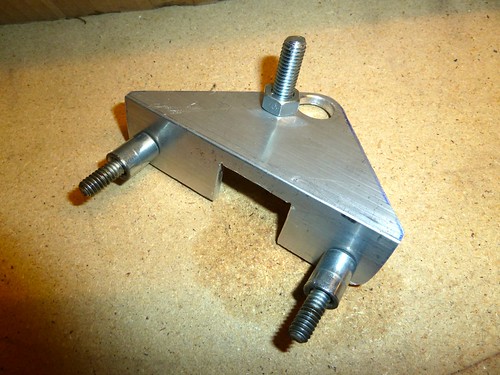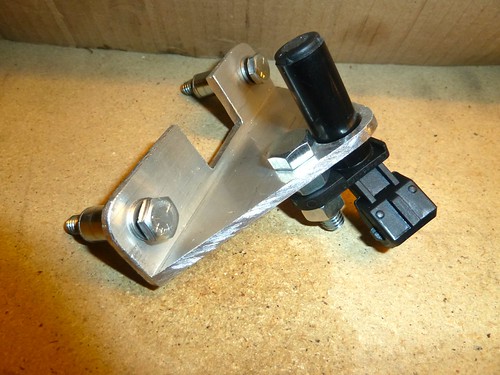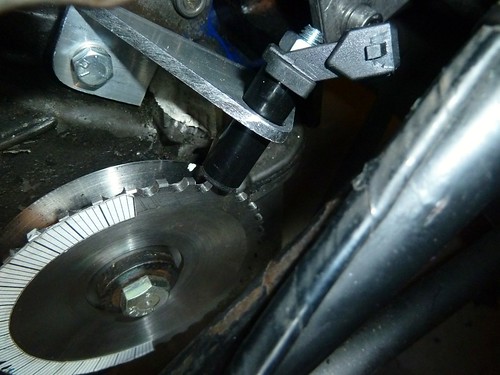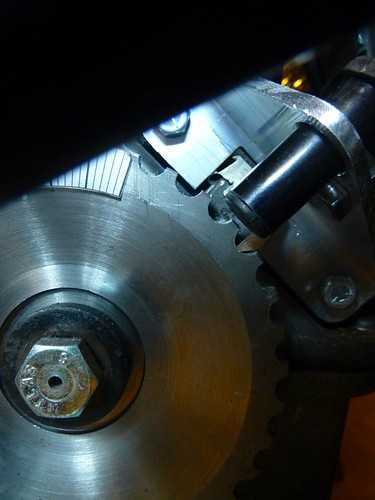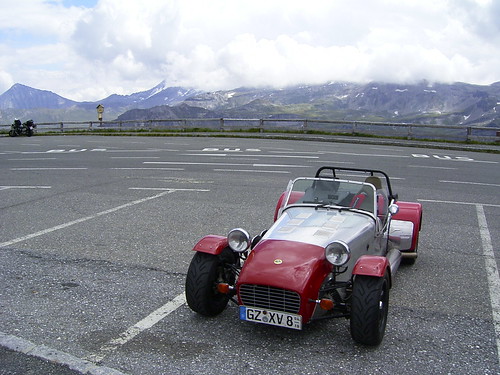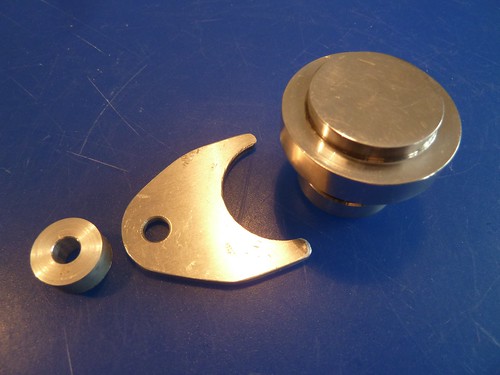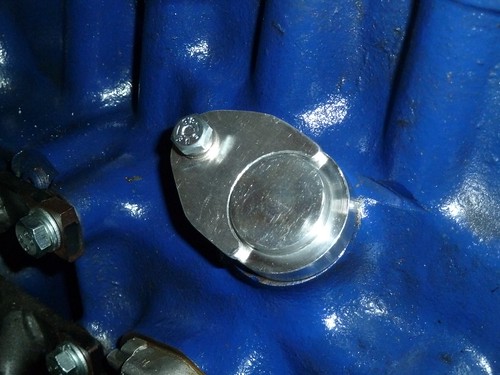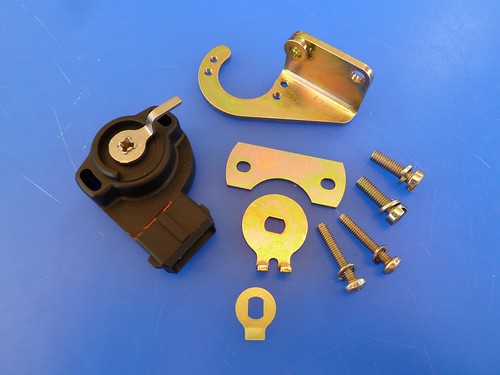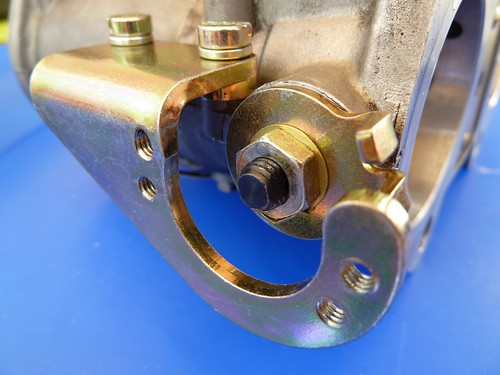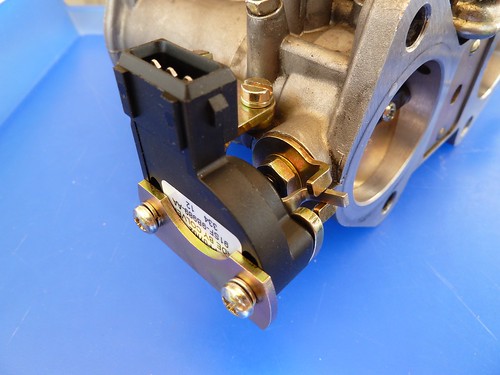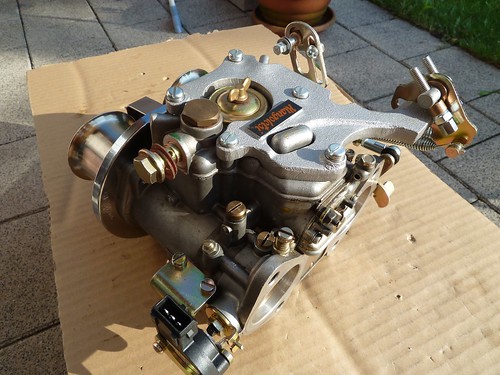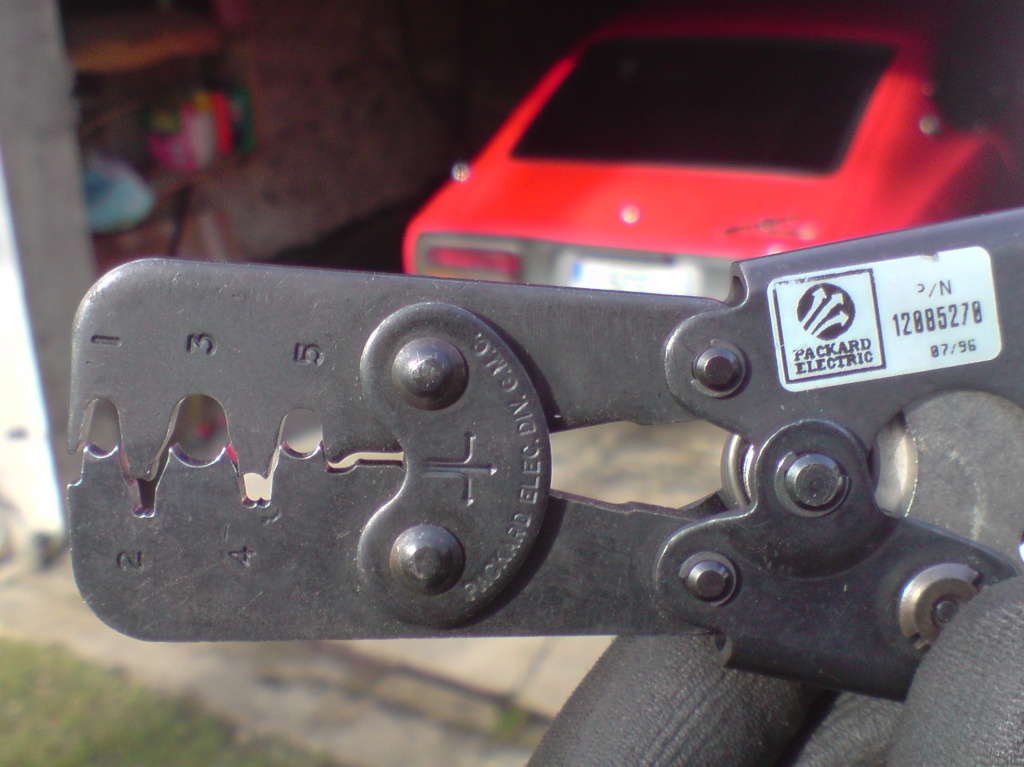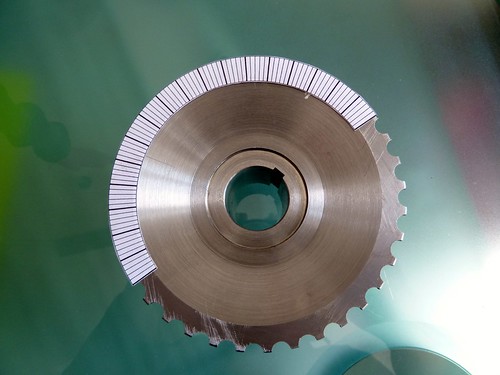Next on the agenda was to build a bracket for the VR-sensor.
First I had to find a convenient place on the engine block where I could install the bracket without too much hassle.
I had a look at the Weber crank TDC trigger kit. This mounts nicely near the TDC marker on the engine block, so I decided to do the same.
Because the trigger wheel is an integral part of the QED pulley, I had to come up with a bracket that would exactly position the VR-Sensor over a tooth when at TDC.
So I did the following:
1) Build a wooden mock-up of a small plate that would clear the TDC marker on the engine block and use two bolts with spacers in order to bolt that plate to the block.
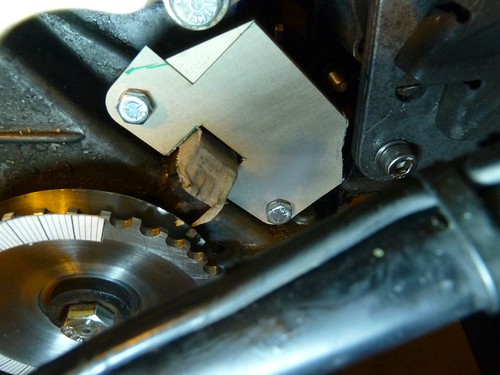
2) Build a small wooden plate with a slot for the VR-sensor. This plate goes perpendicular to the base plate...

I also installed a bolt that has about the same diameter as the VR-Sensor in the slot. I drilled a hole in the center of the bolt to accept a thicker wire for the following step.
3) Next I drilled a pilot hole into an old pulley bolt and used this to attach the pulley to the crank.
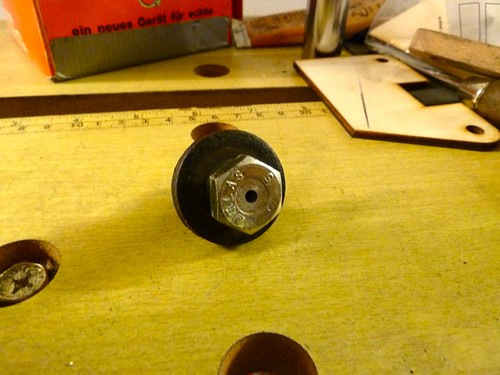
4) Then I bent some wire into an L-shape... get the idea?
This wire slides into the bolt in the wood plate an into the pilot hole in the crank bolt.

5) Now it is time to put the engine at TDC...
I used a dial gauge in cylinder one. Using the good old finding TDC procedure (google it up...) I slowly turned the engine over a couple of times, dialing in the same gauge value before and after TDC, marking the points on the timing disk that I glued to the pulley. TDC is then the exact center between the two marks.
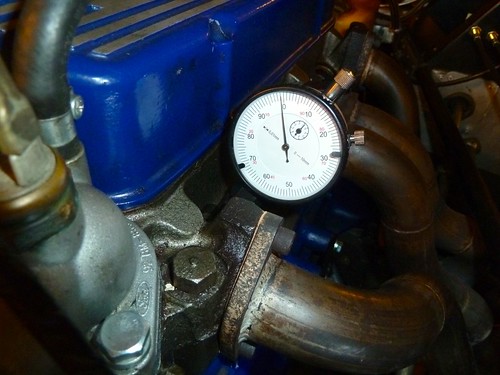

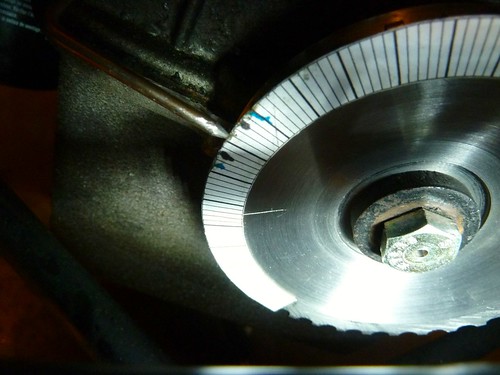
6) Back to the VR-Bracket...
With the engine at TDC, I now inserted the L-shaped wire into the pilot hole.
Now, I simply needed to rotate the whole assembly around the pilot hole and position everything exactly over a tooth...
I just needed to mark where everything needed to be....

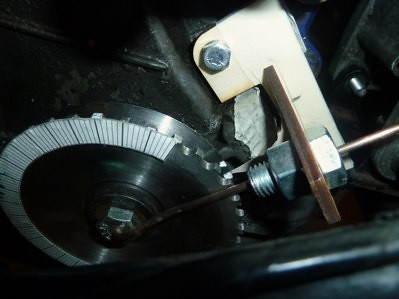
7) With everything marked up, I could now do some cardboard to make the final shape and transfer this over to a 5mm aluminium L-shaped material.

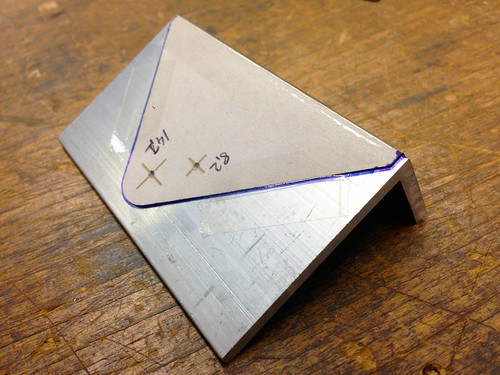
8) Just some small saw, drill and file action, and here is the bracket in all its beauty...
